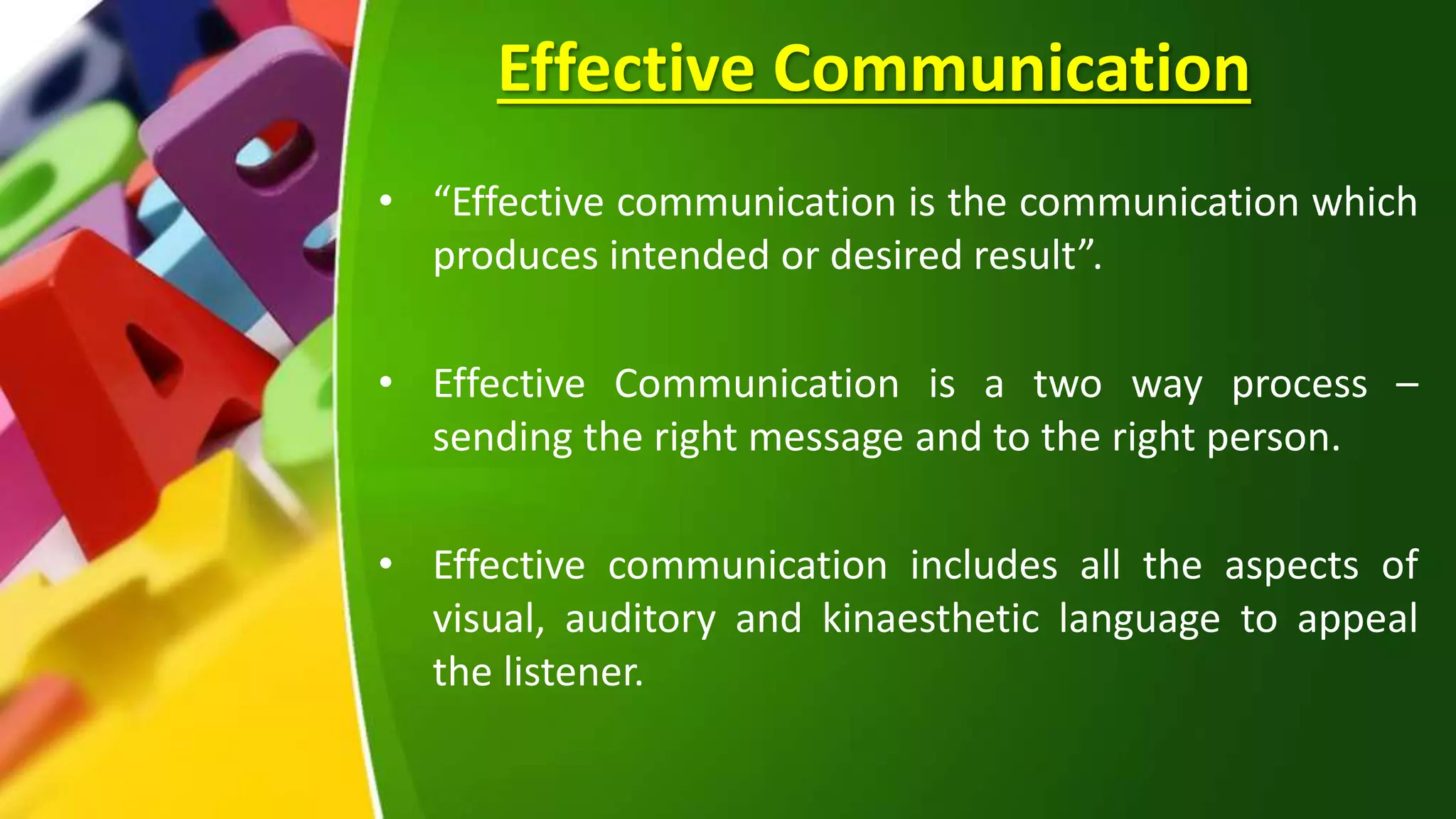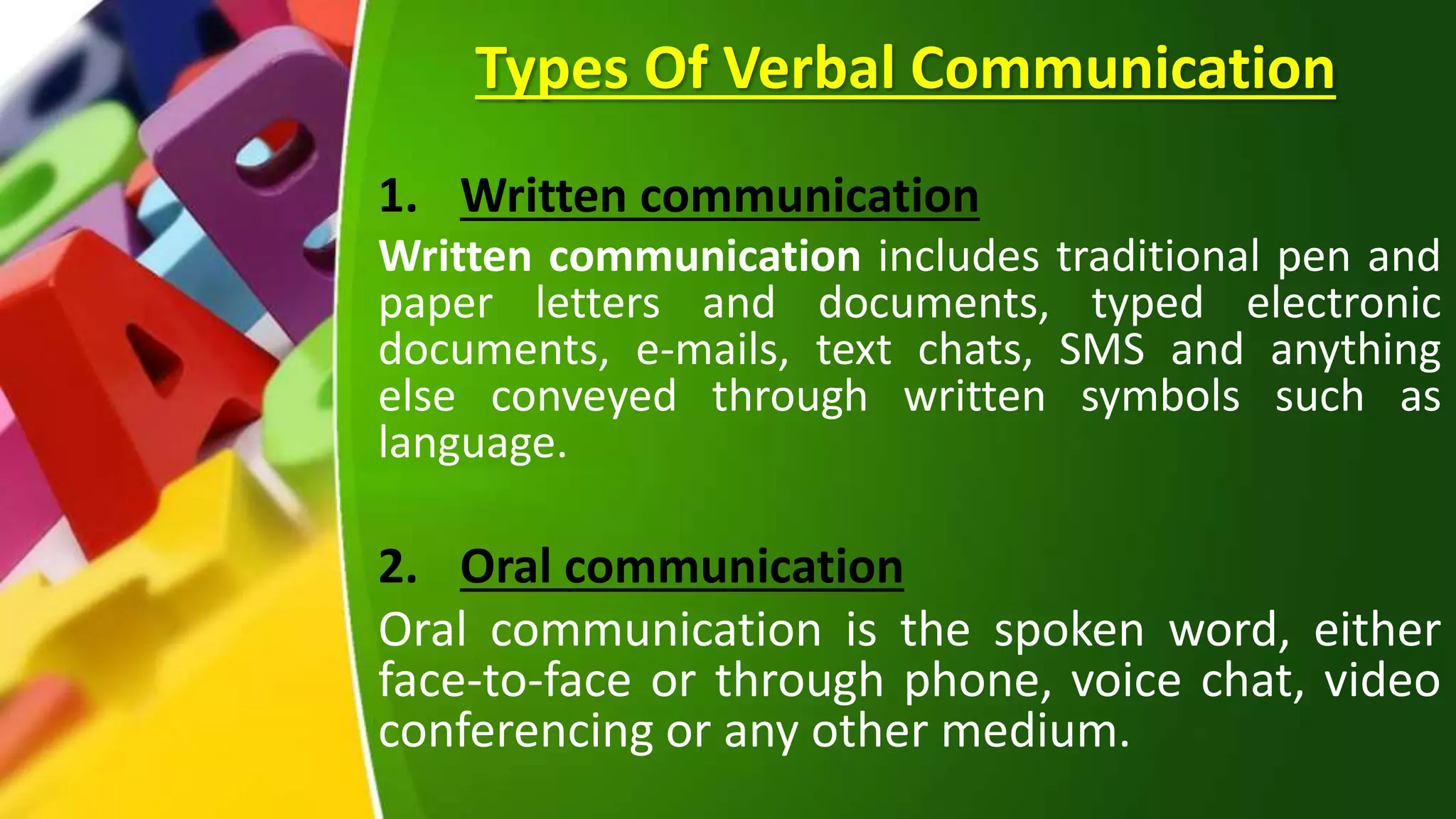This document discusses communication skills and soft skills. It defines soft skills as personality traits and interpersonal skills that are important for job success. Some key soft skills mentioned include stress management, time management, conflict management, and interpersonal skills. The document then discusses various types of communication skills, including verbal communication skills like writing and speaking, as well as non-verbal communication skills like eye contact and gestures. It describes the process of communication and emphasizes the importance of effective communication through listening skills, clarity, and avoiding common barriers.

































